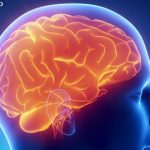Comorbidities
The group also used the Hospital Anxiety and Depression Scale (HADS) to measure signs of anxiety and depression.12 Participants with fewer signs of depression and anxiety at initial assessment were more likely to have pain improvement four years later, reinforcing previous findings of the effects of mental health on pain perception.1,3
Depression is a common comorbidity in osteoarthritis, and patients with major depressive disorder are more likely to experience chronic pain than those in the general population. It’s possible that underlying features, such as increased chronic inflammation, may be partly driving the association of osteoarthritis pain with depression and anxiety.13
Higher initial body mass index (BMI) was also associated with pain deterioration longitudinally. This is consistent with previous crosssectional reports, and some have speculated the association stems from the increased inflammation triggered by adipokines from excess adipose tissue.14
Future Directions
Given the limits of observational studies, Dr. van der Meulen emphasizes the need for replication in other longitudinal hand OA cohorts, such as the Nor-Hand cohort or DIGICOD cohort.6,15 Theoretically, further studies may help identify specific targets for interventions in certain populations of patients with hand OA. For example, teaching specific coping styles or targeting mental health issues may prove useful for some patients.
“For everyone dealing with patients who are experiencing chronic pain, such as from some kind of rheumatic disease, we may need to start looking more at the biopsychosocial model in its entirety,” says Dr. van der Meulen. “That would mean the paradigm has to shift.”
Dr. van der Meulen acknowledges that it is hard to know how to apply these results and the overall biopsychosocial pain model to patients at present. Current ACR guidelines acknowledge that interventions to improve mood, reduce stress and manage weight may improve patients’ overall well-being. Cognitive behavioral therapy, one mode of working with patient beliefs and perceptions, is already conditionally recommended as a potential component of hand OA treatment for some patients.16
“The main thing right now is to have an open mind and see where rheumatology connects to this larger model of pain,” adds Dr. van der Meulen. “And make sure patients know that increasing pain in hand OA is not a given, that it’s often stable or might even improve.”
 Ruth Jessen Hickman, MD, a graduate of the Indiana University School of Medicine, is a medical and science writer in Bloomington, Ind.
Ruth Jessen Hickman, MD, a graduate of the Indiana University School of Medicine, is a medical and science writer in Bloomington, Ind.

